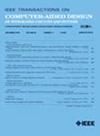FDPUF:用于边缘设备稳健认证的频域 PUF
IF 2.7
3区 计算机科学
Q2 COMPUTER SCIENCE, HARDWARE & ARCHITECTURE
IEEE Transactions on Computer-Aided Design of Integrated Circuits and Systems
Pub Date : 2024-11-06
DOI:10.1109/TCAD.2024.3447211
引用次数: 0
摘要
集成电路(IC)及相关硬件的伪造、过度生产和克隆已成为现代全球化微电子供应链中的主要安全问题。有效解决这些问题的方法之一是部署利用物理不可克隆功能(PUF)的硬件验证技术。PUFs 利用硬件在制造和制造过程中发生的内在变化,生成特定于设备的指纹或不可更改的签名,伪造品和克隆品无法复制。然而,环境噪声和谐波等不可避免的因素会大大降低 PUF 签名的质量。此外,传统的 PUF 解决方案通常无法对硬件进行现场验证,而这已成为物联网(IoT)边缘设备检测物理攻击的关键需求。在本文中,我们介绍了频域 PUF 或 FDPUF,这是一种新型 PUF,可在频域分析时域电流波形,从而创建适合现场验证的高质量验证签名。FDPUF 将电信号分解为频谱系数,滤除不必要的低能成分,重建波形,生成用于设备认证的高质量数字指纹。与现有的认证机制相比,通过频域分析获得的签名质量更高,这使得所提出的 FDPUF 更适合保护边缘计算硬件的完整性。我们在 FPGA 上进行了实验测量,并使用美国国家标准与技术研究院的测试套件分析了 FDPUF 的特性,证明 FDPUF 比其时域对应机制具有更好的唯一性和鲁棒性,同时对现场验证也很有吸引力。本文章由计算机程序翻译,如有差异,请以英文原文为准。
FDPUF: Frequency-Domain PUF for Robust Authentication of Edge Devices
Counterfeiting, overproduction, and cloning of integrated circuits (ICs) and associated hardware have emerged as major security concerns in the modern globalized microelectronics supply chain. One way to combat these issues effectively is to deploy hardware authentication techniques that utilize physical unclonable functions (PUFs). PUFs utilize intrinsic variations in hardware that occur during the manufacturing and fabrication process to generate device-specific fingerprints or immutable signatures that cannot be replicated by counterfeits and clones. However, unavoidable factors like environmental noise and harmonics can significantly deteriorate the quality of the PUF signature. Besides, conventional PUF solutions are generally not amenable to in-field authentication of hardware, which has emerged as a critical need for Internet of Things (IoT) edge devices to detect physical attacks on them. In this article, we introduce frequency-domain PUF or FDPUF, a novel PUF that analyzes time-domain current waveforms in the frequency domain to create high-quality authentication signatures that are suitable for in-field authentication. FDPUF decomposes electrical signals into their spectral coefficients, filters out unnecessary low-energy components, reconstructs the waveforms, and generates high-quality digital fingerprints for device authentication purposes. Compared to the existing authentication mechanisms, the higher quality of the signatures through the frequency-domain analysis makes the proposed FDPUF more suitable for protecting the integrity of the edge computing hardware. We perform experimental measurements on FPGA and analyze FDPUF properties using the National Institute of Standards and Technology test suite to demonstrate that the FDPUF provides better uniqueness and robustness than its time-domain counterpart while being attractive for in-field authentication.
求助全文
通过发布文献求助,成功后即可免费获取论文全文。
去求助
来源期刊
CiteScore
5.60
自引率
13.80%
发文量
500
审稿时长
7 months
期刊介绍:
The purpose of this Transactions is to publish papers of interest to individuals in the area of computer-aided design of integrated circuits and systems composed of analog, digital, mixed-signal, optical, or microwave components. The aids include methods, models, algorithms, and man-machine interfaces for system-level, physical and logical design including: planning, synthesis, partitioning, modeling, simulation, layout, verification, testing, hardware-software co-design and documentation of integrated circuit and system designs of all complexities. Design tools and techniques for evaluating and designing integrated circuits and systems for metrics such as performance, power, reliability, testability, and security are a focus.

 求助内容:
求助内容: 应助结果提醒方式:
应助结果提醒方式:


